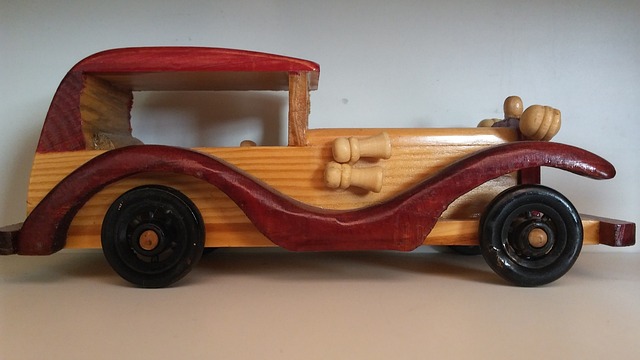When insuring a classic car, one of the most important considerations is how its value is determined in the event of a claim. Unlike standard auto insurance policies, which typically rely on actual cash value (ACV), classic car insurance often uses an agreed value approach. Understanding the differences between these valuation methods and their applications in classic car insurance can help you make informed decisions about protecting your prized possession.
What Is Actual Cash Value (ACV)?
Actual cash value is the standard method used in most regular auto insurance policies to calculate a car’s worth. It takes into account the vehicle’s:
- Original Cost: The price paid when the car was new.
- Depreciation: A reduction in value over time due to age, wear and tear, and market trends.
- Condition: Current physical and operational state.
How ACV Works
If your car is totaled or stolen, your insurance company pays you the ACV, which is the market value of the car at the time of the loss, minus depreciation.
- Example: If you purchased a car for $30,000 five years ago and it depreciated to a market value of $15,000, your insurance payout under ACV would be $15,000 (minus your deductible).
While this approach is straightforward for everyday vehicles, it may not accurately reflect the value of classic cars, which often appreciate or hold their value over time.
What Is Agreed Value?
Agreed value is a valuation method specifically tailored for collectible and classic vehicles. When setting up your policy, you and the insurer agree on the car’s value based on appraisals, market data, and restoration documentation. This value remains fixed for the policy term, providing clarity and assurance.
How Agreed Value Works
If your car is declared a total loss, you receive the full agreed value amount, without deductions for depreciation.
- Example: If you and your insurer agree that your classic car is worth $50,000, your payout after a covered loss would be $50,000, regardless of the car’s age or market fluctuations.
This approach ensures that your investment is fully protected, making it a preferred option for classic car owners.
Why Agreed Value Matters for Classic Cars
Classic cars often have unique attributes that make them unsuitable for ACV calculations:
- Appreciation: Unlike standard vehicles, many classic cars increase in value over time due to rarity, historical significance, or restoration.
- Customization: Custom parts, modifications, and restorations add value that ACV may not adequately account for.
- Market Variability: Classic car values can fluctuate based on demand and collector interest, making a fixed agreed value more reliable.
Explore more about what classic car insurance covers in What Does Classic Car Insurance Typically Cover?.
Key Differences Between Agreed Value and ACV
| Feature | Agreed Value | Actual Cash Value (ACV) |
|---|---|---|
| Valuation Basis | Pre-determined value agreed with insurer | Depreciated market value at time of loss |
| Depreciation | Not applicable | Deducted from payout |
| Coverage Consistency | Fixed payout amount | Payout varies based on market trends |
| Ideal For | Classic and collectible cars | Standard vehicles |
How to Choose the Right Valuation Method
When deciding between agreed value and ACV for your classic car insurance, consider the following factors:
1. Vehicle Type and Value
- If your car is a rare or highly collectible model, agreed value is the better choice to ensure full protection.
- For everyday older cars without significant collector value, ACV may suffice.
2. Usage
- Agreed value policies cater to vehicles used for limited purposes, such as car shows or weekend drives.
- ACV policies are better suited for vehicles driven regularly.
3. Cost Considerations
- Agreed value policies typically have higher premiums due to the comprehensive protection they offer.
- ACV policies are more cost-effective but may not cover the full value of your car.
Real-Life Example: Agreed Value in Action
A friend of mine owns a beautifully restored 1965 Ford Mustang insured under an agreed value policy for $70,000. When an unexpected fire damaged the car, the insurer paid the full $70,000 agreed value, allowing him to restore the car to its original condition. Under an ACV policy, the payout would likely have been much lower, leaving him with out-of-pocket costs.
Combining Agreed Value with Additional Coverage
To further enhance your policy, consider adding options like:
- Spare Parts Coverage: Protects rare components stored for future restorations.
- Roadside Assistance: Offers specialized towing for classic cars.
- Event Coverage: Covers damages incurred during car shows or exhibitions.
For more insights on driving a classic car and its insurance implications, visit Can You Drive a Classic Car Regularly with Classic Car Insurance?.
Ensuring Your Classic Car’s Value Is Properly Covered
To maximize your classic car insurance policy’s effectiveness:
- Obtain a Professional Appraisal: Ensure the agreed value reflects the true worth of your car.
- Document Restorations: Keep detailed records of upgrades and modifications.
- Review Your Policy Annually: Adjust the agreed value to account for market changes or further restorations.
- Work with Specialized Insurers: Choose providers experienced in classic car coverage.
Understanding the differences between agreed value and actual cash value ensures your classic car’s value is accurately represented and adequately protected. By selecting the right policy and coverage, you can enjoy your vehicle while safeguarding your investment for years to come.



